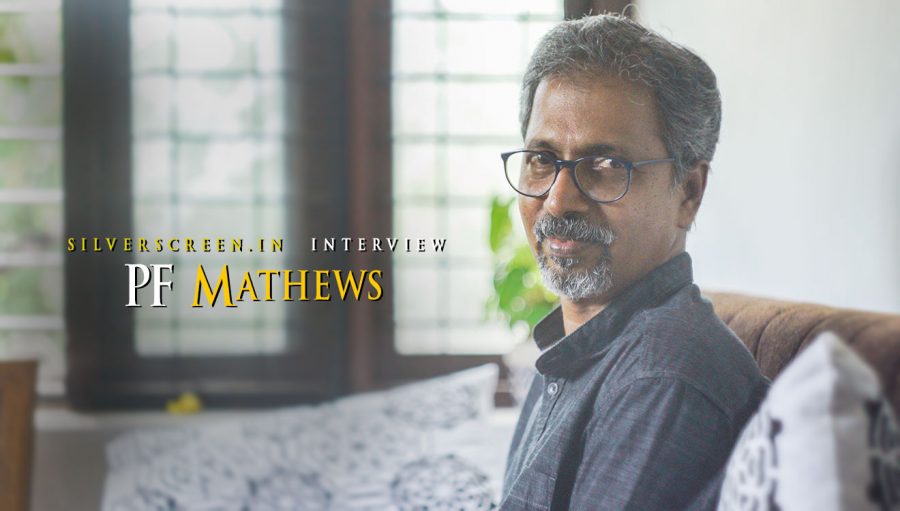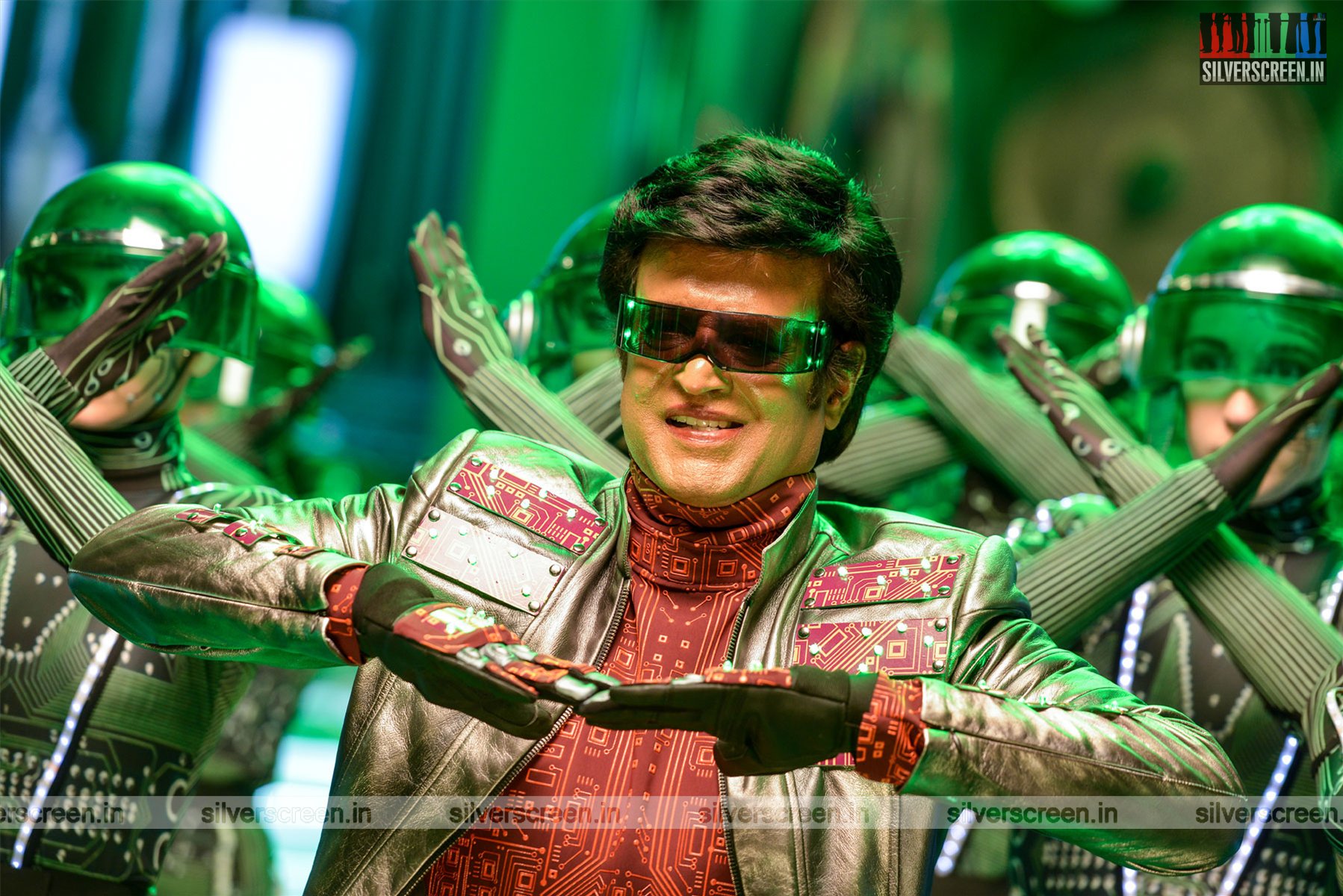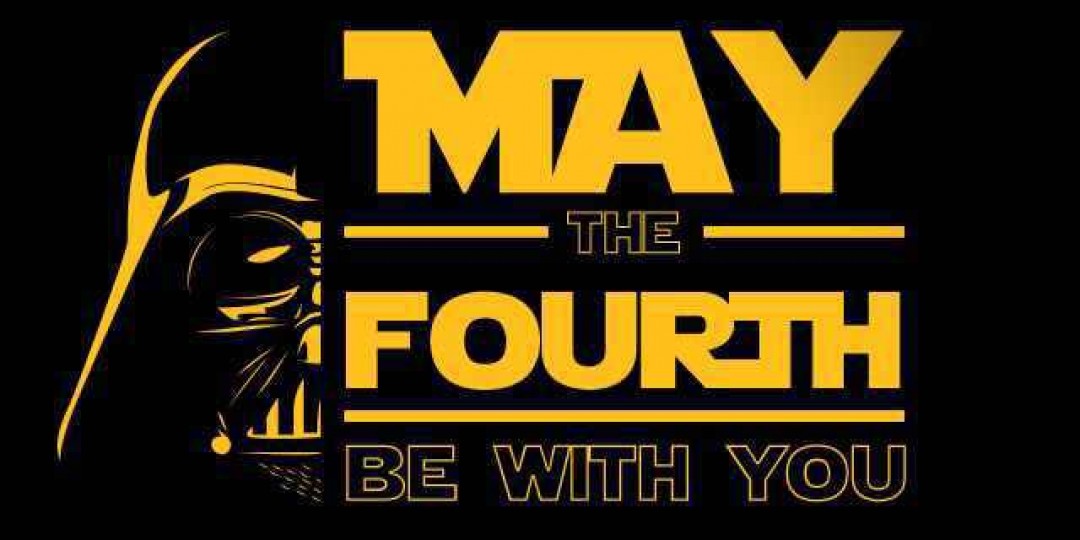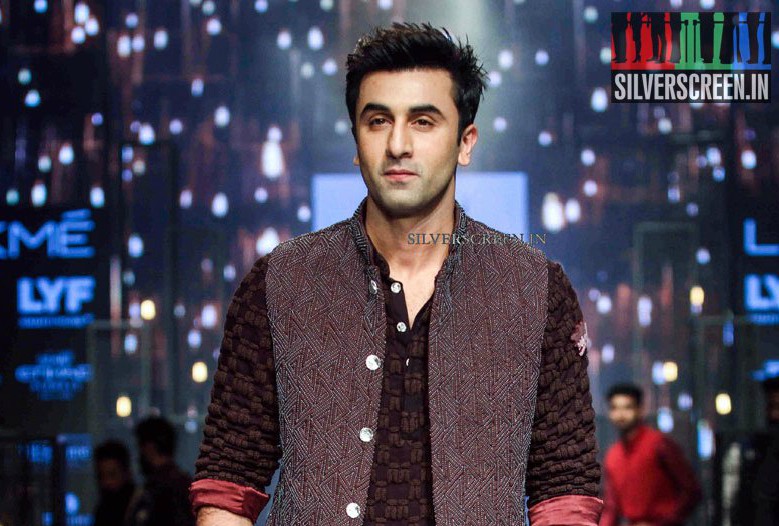Somewhere during our conversation, author and screenplay writer PF Mathews pauses to describe an early memory. “My great grandmother was a peculiar woman. I vividly remember an image. She is on the courtyard of her house, chewing betel leaves and grinding rice, while narrating to us children stories about spirits, angels and the devil. She is clad in traditional white. Brass earrings dangle from long earlobes; her pitch-dark complexion glows in the yellow of the electric bulb…”
Mathews looks for images everywhere – in his memories, Kochi’s backwater islands, coastal villages, marshlands and maze-like lanes where several layers of history rest amid peace and chaos. The 58-year-old writer’s oeuvre includes a novel, several novellas and short stories, and a handful of screenplays. In 2010, he won the National Award for Best Screenplay for Kutty Srank. After a gap of eight years, he returned to the tinsel world in 2017 to collaborate with Lijo Jose Pellissery; Ee Ma Yau, released in theatres last week to rave reviews. The brilliantly layered screenplay of Ee Ma Yau is being widely praised, discussed and dissected. Finally, Mathews has found the much-deserved fame and limelight that eluded him for many years.
His magnum opus, inarguably, is Chavunilam, a novel set in an imaginary island in Kochi that ruminates human existence, religion and death through a story intertwined with the cultural and physical landscape of Kochi. First published in 1996, it is a masterfully-crafted piece; one of the few literary works that represents the life of the minority Latin Catholic community in Kerala.
I meet Mathews at his house, Megham (clouds), a little away from the sea and backwaters where all his characters dwell in. Over a cup of tea, he speaks about his career as a novelist and screenwriter, the many stories and myths of Kochi, Christianity with which he shares a complicated relationship, and the people and spaces that inspire his stories.
***
Mathews grew up in Kombara, a neighbourhood in Kochi’s heartland. “The city was then a smaller place, not yet a Corporation or a metropolis as it is now. Ours was the only Christian family in a Dheevara colony called Thandassery Parambu. That’s where I picked up the nuances of community life,” he begins. His father, Francis, owned a boat that ferried goods between Mattancherry and Kochi.
Mathews always watched Kochi curiously, closely following its tiniest transformations over time. “The church in Chavunilam is modelled on an ancient one in Kathrikkadavu. It was later replaced by a giant opulent structure that resembles a bungalow. The coastal village in Ee Ma Yau is, geographically, Chellanam. But culturally, it could be placed anywhere in Kochi’s archipelago – Gothurth, Pattanithuruth, Kumbalangi, Kari island..”
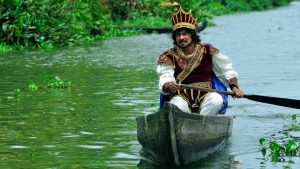
Mathews’ grandmother lived in a typical Latin Catholic Christian village by the sea. His uncle Eeshi had a movie theatre, Asha, from where Mathews’ film memories begin. “I remember watching black-and-white Malayalam films at this theatre,” he says. “My father was against us watching films, because he believed it was a bad habit. But, he had a secret. He watched all the Hollywood classics that released at Ernakulam’s Sridhar theater. We came to know of it only years later, when he accidentally revealed details of his escapades,” he laughs. When he was old enough to bunk school, Mathews started frequenting movie halls unaccompanied, with the money saved from doing odd tutorial jobs.
Around the same period, he was smitten by the dark tragic tales written by Fyodor Dostoevsky. “Those writings got me confused about religion, adulthood and identity. I didn’t fall in love during my teenage. I spent those years reading, writing and watching films. In hindsight, I wasted away those formative years,” he says.
Alongside writing, he practiced sculpting and painting. “I never really had the courage to get my stories published in a mainstream magazine, until my friend George Joseph sent a story to Kala Kaumudi in 1979. One of my stories was published in Sankramanam, a niche magazine. It was titled Assaminu Pirakil Subash Parkile Kurangan; a surrealistic experimental piece. It mirrored my politics and insecurities. It was immature too.”
***
Mathews’ career as a scenarist began with Sararanthal (Lantern), a tele-serial aired on Doordarshan in 1991. It won him the Kerala State Television Award for best screenplay. He won the award again in 1993 for the highly acclaimed tele-film Mikhayelinte Santhathikal (Descendants of Mikhayel), directed by his classmate Jude Attipetti.
“I make stories from images. In films too, I prefer visuals to dialogues or a storyline. Unfortunately, in Malayalam cinema, there is a strong fixation with dialogue-based story-telling,” he says.
Even after winning the National Award, Mathews lived a low-profile life, doing a day job at the Advocate General’s Office, from where he retired a few years ago. Ee Ma Yau, however, was a novel experience. It left him utmost satisfied. “It is perhaps the only project that did complete justice to my screenplay and me,” he says.
When Mathews first met Lijo, the latter was a student in Bangalore. Mathews was writing a tele-serial in which Lijo’s father, the late Jose Pellissery, played a pivotal role. “Jose was worried about him, for he was obsessed with films. But when I spoke to Lijo, I realised he was serious about his ambition to be a filmmaker. And, I was surprised to know that he was familiar with all my works till then. He had seen Mikhayelinte Santhathikal, Sararanthal and even the lesser known tele-serial Dr Harishchandra.”
When they met the next time, Lijo had a bunch of acclaimed films to his credit. After Amen, he approached Mathews with plans to collaborate for a movie. “We got along really well. The project we discussed was a trilogy. A screenplay I wrote was with Prithviraj, who passed it to Lijo. But, it did not take off.”
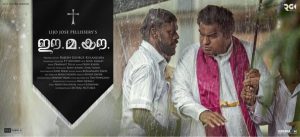
Ee Ma Yau started from a two-line thread that Lijo narrated: An old man comes home in a bus, carrying a bag with a bottle of arrack and a live duck. He drinks that night with his son, collapses and dies. Mathews’ screenplay was set against the cultural milieu of Cochin coastal villages, and inserted delectable mystic undertones.
“As compared to Lijo’s previous films, Ee Ma Yau is more screenplay-based,”says Mathews. “Lijo is a good director. Not many people can create good cinema from a screenplay. For instance, in the scene where Eeshi’s wife hands over some money to him, you can see Vinayakan’s Ayyappan in the background, shouting at someone. Lijo knows how to set up a scene perfectly. He brings alive the background.”
Conflict between the individual and the church has been a part of Lijo’s previous films such as Amen. In Ee Ma Yau, you see it again, in a finer form. The church is a recurring image and character in Mathews’ writings too. “I’ve always had differences over how the Church involved itself in society,” says Mathews. “Its presence in life can be suffocating. Religion thrives by instilling fear in people. If you skip Sunday mass, they say you’ve sinned. They control your body too, by saying physical pleasure is a sin. But, I would never write the Church off completely. It’s a part of my life. I grew up within that culture.”
Ee Ma Yau was such a smooth sail that Mathews is looking forward to working with Lijo again. “Rarely do you find such good collaborators. I have never been able to get along with many filmmakers. We always end up in a muddled creative conflict. That’s one reason I haven’t written many screenplays,” he says.
“Some of my favourite Malayalam films are Eli Pathayam and Kodiyettam. I am a fan of vintage Adoor Gopalakrishnan. Another film that I really like is PN Menon’s Olavum Theeravum,” he lists out. “I do watch a lot of films. (Andrei )Tarkovsky’s Mirror is among the few films I keep revisiting. Michael Haneke’s Amour is a beautiful film. Theo Angelopoulos’s Eternity And A Day is another favourite film. Among the recent filmmakers, I like Sean Baker who made Tangerine. He shot it on a mobile phone!”
Indie filmmaker Vipin Vijay has the film rights of Chavunilam. “I sold it to him a long time ago. He wrote a script and submitted to Film Bazaar, but the project never took off. But, even if he adapts it into a film, it wouldn’t look anything like my novel. He has different sensibilities and tastes. One of the reasons I gave him the rights is because I was curious to see how he would interpret it,” says Mathews.
Mathews rarely visited the location of Ee Ma Yau, for he had complete trust in the director. “Lijo’s work surpassed my expectations, I should say. For one, see how majestically he had set up the opening shot! I wasn’t confident about filming many scenes as a single shot. Especially, the scene where the corpse falls off the coffin. In a different film, that scene might have been done traditionally, in multiple shots from various angles. But Lijo knew that this way, the scene would be much more powerful. The dialogues, were mostly written as pointers, and the artistes improvised well.”
All the discussions around Ee Ma Yau‘s magical realism elements crack him up. “People misuse and misinterpret the term ‘magical realism’,” he says. “In Chavunilam, there is an instance where an entire village contracts conjunctivitis soon after one of the lead characters dies. There are readers who interpreted it as magical realism. It is not. I wrote it based on the funeral of a relative I had witnessed in my childhood. The man died in the peak of the monsoon, when it is toughest to dig a grave in the coastal areas. The pandal erected in front of the house collapsed in the rain, and people started worrying that it would be impossible to bury the body that day. Somehow, they managed to do it. Strange enough, shortly after the body was buried, the entire family of the dead man contracted conjunctivitis. That incident stayed with me for a long time.”
Mathews’ novels and screenplays reveal an affinity for funeral scenes and death. His debut feature Puthran opens with a funeral scene, and Chavunilam is replete with instances of death. Kutty Srank was centered on a corpse of a nameless man floating on a lagoon, and Ee Ma Yau is about a funeral that goes awry. “In our community, death is celebrated. I have found this obsession with funerals, or the ‘final journey’ very interesting. Mourners sit by the corpse and sing Kannokku – a musical narration of the person’s life-story. This song is also used to remind the visitors of their relationship with the dead person. They do it with utmost seriousness. In coastal areas, funeral rituals resemble a stage performance. The relatives cry, sing and even faint when the corpse is taken away to the graveyard, and in the evening, when everything is over, the family would sit together and have dinner which is called ‘Pashni Kanji, chatting and laughing. That is how they come back to normal life,” says Mathews. “I have always looked at these rituals with a sense of alienation. I was a child when my grandfather passed away. I was sent to nearby neighborhoods to convey the news of his death. I liked going away because it cut me off from the gloom and chaos.”
This practice of celebrating funerals, weddings and every event in life has a dark side too, explains Mathews. “This community is composed of impoverished families. They use up their savings and even take hefty loans to celebrate these occasions, and head into a tighter debt trap. For most of those people, there is nothing bright to look forward to, other than debt and poverty. I think that explains why the majority of the literary works about Latin Catholic Christians is characterised by darkness and pessimism. It could be a reflection of the community’s plight. Christianity promises to soothe them, but in reality, they lead a rough life.”
I ask him about Eeshi’s unperturbed love for his father in spite of him being a drifter. When Vavachan Mesthiri returns home from one of his not-so-secretive journeys, his wife and daughters bicker, but Eeshi is glad to see him. The son and the father drink together in the evening, and have a hearty time that ends tragically when the father succumbs to a heart attack. Eeshi sinks into grief. He fights with the church and the community to uphold his father’s dignity, and even risks his social status in the process.
“The paternal figure is a really powerful one in Christianity. The God is a man, so are the angels. Mother Mary is just a medium,” says Mathews. “Due to space crunch, graves of people were slowly removed. People started seeking other ways to retain the memory of the dead. Like preserving the pamphlets announcing the death. In many Christian households I know, inside the Holy Bible, there is a collection of such pamphlets,” says Mathews.
“I have barely visited my mother’s grave. For me, when people die, they really turn into nothing. I convert them into fictional pieces.”
***
Islands in Kerala’s backwaters are called ‘thuruth’. “I like the ring of that word,” he says. “It creates an enchanting imagery – a socially isolated place that traps its inhabitants forever. The islands in Chavunilam, Ee Ma Yau and in all my stories are, in a way, my mindscape. It’s not about real places or time,” he says.
Kochi’s reality, he says, is composed of mythical tales that an outsider might find exotic or funny. “I grew up hearing a lot of tales about Kappiri Muthappan, the spirit of the African slave who was murdered and buried by his Portuguese masters. People speak of him as though he is a matter of fact. They keep cigar and liquor at his shrine.
“I never try to dissect these tales. I like to retain their absurdities and magical beauty,” he says.
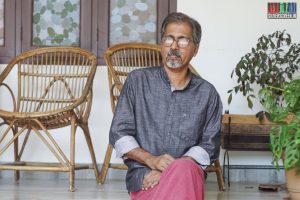
Many a time, Mathews has encountered questions on his decision to base his stories in Kochi. “I was advised to move away from Kochi and Latin Christian community, and write more popularly acceptable stories. There are people who find issues with the Kochi tongue that my characters speak. But I have never felt the need for it,” says Mathews.
“In fact, I was surprised when Ee Ma Yau received rave reviews. It is unusual for an audience that celebrates films that laugh at human sensibilities,” says Mathews.
Ee Ma Yau is significant for another reason. It brings to Malayalam cinema a rich sub-culture that has little representation in Kerala’s popular culture.
“There are uniquely talented artistes – singers, poets, Chavittu Natakam exponents – in this region who lived and died in poverty, barely known to the outside world,” he says, citing the example of a blind singer who roamed the streets of Mattanchery, singing his profoundly philosophical compositions. “The legend of Kurudan Pareekkutty reminds me of the Homer of Greece. Most of his works were lost after his death.”
Recommended
While the most famous literary work about Kochi’s Latin Catholics and Creole community is NS Madhavan’s Lanthan Batheriyile Luthiniyakal, there are several writers such as Mathews, who are from within the community. “Writers such as Ponjikkara Rafi, George Joseph K, Varyathu Chori Peter and Johny Miranda have produced monumental works that go largely unnoticed in the mainstream literature scene. They need more readers,” says Mathews. “It’s only recently that people started reading and discussing Chavunilam.”
But Mathews seems barely perturbed by the lack of limelight on him. Sitting amid a collection of books in a room with light-colored walls and a window lined with in-house plants, Mathews laughs and says that he writes only to express. “I was never bothered about the number of readers or the editions. I never made a lot of money or fame through my books. Of course, it’s nice when people read and discuss my works. But, I have never gone overboard with the business part of writing. That’s not me.”
****
